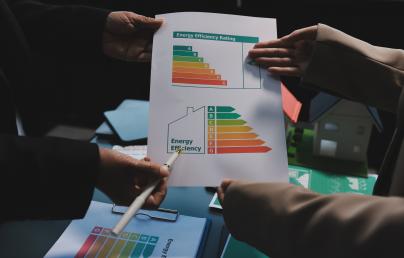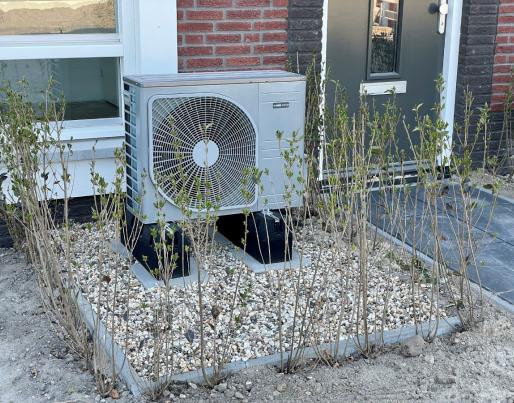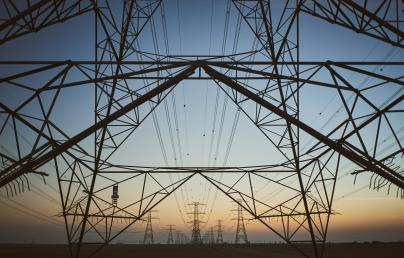
Overview Article - Integrating Heat Pumps in Existing Residential Buildings

Overview Article - Integrating Heat Pumps in Existing Residential Buildings
The installation of heat pumps is central in the REPowerEU plan, and the European Commission has set the ambitious goal to install 10 million new heat pumps in 5 years. Although the installation of heat pumps in new buildings is conventional, the replacement of existing heating systems with heat pumps is more challenging but extremely important. This article reports on the opportunities and barriers the sector is facing when addressing residential buildings retrofit, while heat pumps have topped 20% of the small-scale heat generators market in the EU.
Author: Roberto Fedrizzi (Eurac Research).
Note: opinions in the articles are of the authors only and do not necessarily reflect the opinion of the EU.
The 2022 REPowerEU[1] plan considers the electrification of the heating and cooling sector as one of the strategic pathways towards reducing natural gas imports. Reversible heat pumps can cover the space heating, space cooling, and domestic hot water needs of buildings without local pollutant emissions and can exploit renewable heat from air, water and ground. They have the potential to become one of the main enabling technologies, and not only in mild climates. The Commission has set an ambitious objective for the sector of installing 10 million new heat pumps over 5 years across the EU.
While the installation of heat pumps has become a mainstream solution these days in newly built residential and tertiary buildings, the installation in retrofitted buildings is gaining market shares, both pulled by energy efficiency regulations and voluntary certification schemes.
When renovation of buildings is considered, concerns usually persist both by final users and operators (like energy planners and installers) in terms of whether the new heat pump will properly operate on a distribution system that was designed and set up to function with a high-temperature fossil fuelled boiler, the possible additional noise introduced, and the expected systems’ performance and operational costs overall.
From this perspective, coupling heat pumps with local PV electricity generation, even though not necessary for an effective system operation, offers obvious opportunities in terms of reducing the electricity drawn from the grid, hence cutting the energy bill on the one hand, and increasing the renewable energy content of the heat and cold provided to the building on the other.
Overview on heat pump applications in existing residential buildings
Heat pump systems are market ready solutions
Although heat pump systems are a market-mature technology, they inherently feature a higher upfront investment cost compared to conventional gas boilers, as these represent the market benchmark; hence production volumes are not comparable. This is the reason why energy efficiency regulations and public incentives are in place in EU Member States, trying to establish a level playing field between technologies having reached different levels of industrial maturity, hence facilitating, and accelerating the transition from fossil fuel driven solutions.
This said, growing sales numbers result in lower production costs; economies of scale are materialising at the component and the system level. Heat pump systems are economically sustainable solutions without incentives in many applications: in newly built, residential applications, heat pump systems have reached the stage of a well-established market. In a sector where energy efficiency is felt as a high priority by all stakeholders, from homeowners to decision makers, heat pump systems indeed contribute to highly increasing the share of RES exploited to cover both electric and thermal loads, on the one hand; on the other hand, they allow for covering heating and cooling uses with one unique generation unit. In this context, the additional cost of the heat pump system is marginal compared to a conventional gas boiler and split unit solution, while running costs are significantly lower.
In 2021 the small-scale heat pumps market for residential and tertiary applications showed an increase of 34% on the previous year, with almost 2.2 million units installed in the EU. In developed markets like the Scandinavian countries, heat pumps cover more than 90% of the heat generators commercialised in the residential and tertiary sector, thanks to severe legislation against fossil fuelled boiler installation. In large and fast developing markets, such market share values vary between around 16% in Germany and Poland, 23-25% in Italy and Spain, and 32% in France and Austria. Overall, in 2021 heat pumps covered around 21-22% of the small-scale heat generators market in the EU[2].
Barriers to a faster transition
Most of the market is related to newly built single-family homes, while the heat pumps installed in multifamily applications correspond to less than 10% of the total number of units installed. The building renovation market is still in early development and this technology is gaining attention from manufacturers because most of the construction market in the building sector is related to the retrofit of the 120 million houses with more or less severe measures. The deep-retrofit market relates to only 1-1.5% of the building stock every year, (i.e., 1.2 – 1.8 million buildings every year), while more in general the rate of change of fossil fuelled boilers lies in the range of 4%, (i.e., 4.8 million units a year).
Although there is huge potential, the main barriers to faster adoption are mainly cultural and related to the structure of the construction market; the construction sector tends to be conservative and changes slowly. Generating knowledge on the demand side (building owners, facility managers, property developers) and upskilling stakeholders on the supply side (manufacturers, designers, installers) towards a solution that is not conventional is one of the main activities the heat pump sector is focused on.
The highest hurdle in this sense is related to addressing space heating systems using radiators. In homes built before 1980s, radiators used to be sized and operated with a supply water temperature in the range of 70°C to 80°C; a common perception is that such solutions cannot cover heat loads with the necessary comfort provided to the inhabitants when operated at lower temperatures.
Several monitoring campaigns[3] have highlighted how supply temperatures to radiators are inflated as norms require sizing based on minimum observed temperatures over the past 20 years. While these vary in a range of -8°C to -15°C over central Europe, they materialise extremely rarely. Moreover, heating systems are most often set off during the coldest hours of the night. As such, the incidence of very cold hours over the entire operation of a heating system is limited and this can be operated at maximum supply temperatures normally in the range of 50-55°C, fully compatible with the operation of a conventional heat pump.
To cover peak thermal loads, manufacturers have developed several strategies including integrating backup electric resistance in the heat pump unit and by developing packages integrating both heat pump and fossil fuelled boiler (i.e., hybrid heat pumps). In addition, several manufacturers are now moving in the direction of developing high temperature heat pumps with supply temperatures of up to 65°C, exploiting natural refrigerants.
While operating heat pumps at the lowest possible temperatures is in general advisable to minimise the electricity consumed, using backup systems is inefficient and sometimes impractical. Adopting large electric resistances is expensive in several Member States due to taxation of electric capacity installed; retaining the connection to the gas network for the sake of covering heating peak loads might be pointlessly costly as well.
For these reasons, installing a heat pump system is most effective when combined with a building envelope energy retrofit. Monitoring campaigns have shown once more how a deep retrofit of the building, including substituting radiators with radiant floors or ceilings, is ideal to minimise electricity consumption. However, satisfactory energy performance, with system seasonal performance factors in the range of 2.5 to 3.0, can be obtained with more modest measures implemented, such as substituting windows, insulating rooftops and balancing the hydraulic distribution, if these allow the system to cover peak loads with supply temperatures to the radiators that are suitable to conventional heat pumps technologies (i.e., up to 55°C) and modulating the same temperature wisely over time.
Apart from this, installing heat pump systems in retrofitted buildings requires modifications to the existing technical room and additional setups, compared to simply substituting the existing fossil fuelled boiler with a new one. Thus, construction companies and homeowners often choose the easiest and cheapest way, even when it is clearly far less energy efficient. To address this issue technology providers and researchers are working towards developing and marketing solutions that are incrementally easier to install and operate in retrofitted buildings, while providing the homeowner with high energy efficiency and additional commodities (like space cooling).
Heat pump systems born to fit to buildings retrofit
On the innovation side, new systems are under development and approaching the market entry designed as a water loop solution on two levels. Water to air micro-heat pumps with a thermal capacity in the range of 2 to 5 kW are installed in each room of the dwelling, substituting existing radiators and allowing the system to cover both space heating and cooling needs. To this end, the single distributed units are driven by a low-temperature water loop, with the supply temperature managed in between 15°C and 30°C, to optimise the system performance throughout the day and the seasons. A system of idcentral air to water heat pumps and thermal storage tanks balances out the thermal load demands on the low-temperature water loop.
The rationale behind this heating and cooling system solution is manifold. Using water to air micro heat pumps in each room allows for a very detailed coverage of both the heating and cooling loads. Dealing with cooling loads does not require the installation of dedicated pipelines, since the water flowing in the existing risers is always maintained above dewpoint, avoiding surface condensation. In addition, such a diffused configuration allows to cover contemporary heating and cooling loads over different parts of the building. Waste heat recovered from providing space cooling to the building can partially balance out energy uses for DHW preparation during summer.
European and National Projects
FP7 – iNSPiRe – the project iNSPiRe focused on the systemic retrofit of residential and tertiary buildings through envelope and HVAC technologies. An extensive study was carried out to assess energy performance and the costs associated to renovating buildings by means of commercial technologies, including heat pumps.
H2020 – BuildHeat – the project BuildHeat focused on the deep retrofit of multifamily homes both with innovative and commercial technologies. Four demonstration buildings have been retrofitted using a range of heat pump technologies. Retrofit plans together with information on technologies implemented are available.
BMWi-03ET1272A – Wärmepumpen im Bestandgebäuden – this project focused on monitoring the energy performance of 56 heat pump systems installed in existing single family and row-houses, used for both space heating and domestic hot water preparation. The project assessed seasonal energy performance factors of each setup and associated that with building envelope status and emission system installed on site.
H2020 – 4RinEU – the project focused on the deep retrofit of multifamily homes both with innovative and commercial technologies. Four demonstration buildings have been retrofitted using a range of heat pump technologies. Plans together with monitoring data analyses are available.
H2020 - HAPPENING. Through three demo sites (Austria, Italy and Spain), the project will demonstrate a highly versatile, scalable and replicable solution package for buildings energy system retrofitting allowing 70-75% of renewable energy fraction, 30-50% of PE and GHG savings, reduction of planning time by 50% and installation/operation time by 30% and payback time for ESCOs and investors of less than 8 years, compared to best available solution existing today.
H2020 – HP4All brings together leading experts across Europe to enable capacity and skills development within the Heat Pump sector and to ensure that the energy efficiency gains afforded by heat pumps are realised. HP4All will work both with the supply side (manufacturers, SMEs, installers etc) and demand side (building owners, public sector etc.).
The electrification of the heating and cooling sector necessarily goes through addressing the untapped potential associated with the residential building stock. Although the technical hurdles involved in this challenge, and the hard competition with conventional fossil heating solutions, heat pump systems have demonstrated proper and effective operation in retrofitted buildings.
Sharing knowledge and upskilling professionals is one of the main challenges the sector is facing when it comes to setups in existing buildings, with a focus on identifying what the correct boundary conditions are, allowing the heat pump system to function with appropriate energy performance throughout the year, and making sure that systems are properly set up and operated.
[1] COM(2022) 230 final, COMMUNICATION FROM THE COMMISSION TO THE EUROPEAN PARLIAMENT, THE EUROPEAN COUNCIL, THE COUNCIL, THE EUROPEAN ECONOMIC AND SOCIAL COMMITTEE AND THE COMMITTEE OF THE REGIONS
[2] EHPA Market report 2022. District heating substations are not accounted for in this assessment.
[3] Fraunhofer ISE - BMWi-03ET1272A – Wärmepumpen im Bestandgebäuden.

